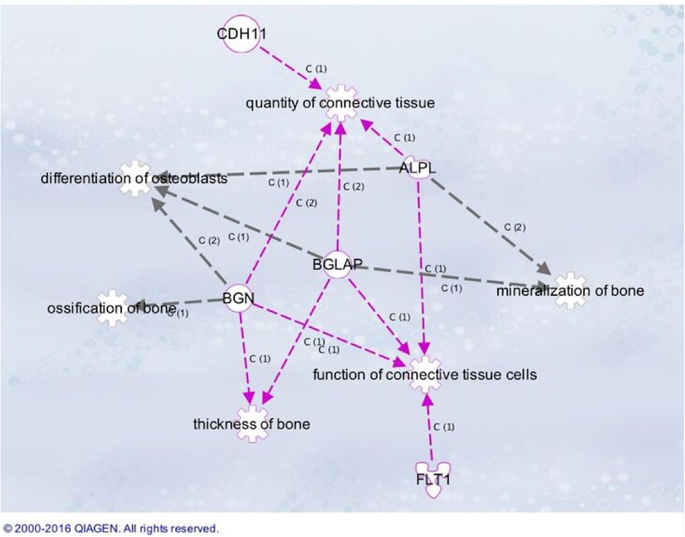BDJ Open ( IF 2.5 ) Pub Date : 2018-11-23 , DOI: 10.1038/s41405-018-0004-6 E K Hefni 1 , S Bencharit 2 , S J Kim 1 , K M Byrd 1 , T Moreli 1 , F H Nociti 3 , S Offenbacher 1 , S P Barros 1

|
Objectives
The long-term success of dental implants is established by literature. Although clinically well defined, the complex genetic pathways underlying osseointegration have not yet been fully elucidated. Furthermore, patients with osteopenia/osteoporosis are considered to present as higher risk for implant failure. Porous tantalum trabecular metal (PTTM), an open-cell porous biomaterial, is suggested to present enhanced biocompatibility and osteoconductivity. The goal of this study was to evaluate the expression patterns of a panel of genes closely associated with osteogenesis and wound healing in osteopenic patients receiving either traditional titanium (Ti) or PTTM cylinders to assess the pathway of genes activation in the early phases of osseointegration.
Material and methods
Implant cylinders made of Ti and PTTM were placed in osteopenic volunteers. At 2- and 4 weeks of healing, one Ti and one PTTM cylinder were removed from each subject for RT-PCR analysis using osteogenesis PCR array.
Results
Compared to Ti, PTTM-associated bone displayed upregulation of bone matrix proteins, BMP/TGF tisuperfamily, soluble ligand and integrin receptors, growth factors, and collagen genes at one or both time points. Histologically, PTTM implants displayed more robust osteogenesis deposition and maturity when compared to Ti implants from the same patient.
Conclusions
Our results indicate that PTTM properties could induce an earlier activation of genes associated with osteogenesis in osteopenic patients suggesting that PTTM implants may attenuate the relative risk of placing dental implants in this population.
中文翻译:

骨质疏松患者钽金属种植体骨整合的转录组学分析
目标
种植牙的长期成功是有文献证实的。尽管临床上已明确定义,但骨整合背后的复杂遗传途径尚未完全阐明。此外,骨质减少/骨质疏松症患者被认为存在较高的种植失败风险。多孔钽小梁金属(PTTM)是一种开孔多孔生物材料,被认为具有增强的生物相容性和骨传导性。本研究的目的是评估接受传统钛 (Ti) 或 PTTM 圆柱体治疗的骨质减少患者中与成骨和伤口愈合密切相关的一组基因的表达模式,以评估骨整合早期阶段基因激活的途径。
材料与方法
由 Ti 和 PTTM 制成的植入圆柱体被放置在骨质疏松志愿者体内。在愈合 2 周和 4 周时,从每位受试者身上取出 1 个 Ti 和 1 个 PTTM 圆柱体,使用成骨 PCR 阵列进行 RT-PCR 分析。
结果
与Ti相比,PTTM相关骨在一个或两个时间点表现出骨基质蛋白、BMP/TGF ti超家族、可溶性配体和整合素受体、生长因子和胶原蛋白基因的上调。从组织学角度来看,与同一患者的钛种植体相比,PTTM 种植体表现出更强的成骨沉积和成熟度。
结论
我们的结果表明,PTTM 特性可以诱导骨质减少患者中与成骨相关的基因的早期激活,这表明 PTTM 种植体可以降低在该人群中植入牙种植体的相对风险。











































 京公网安备 11010802027423号
京公网安备 11010802027423号